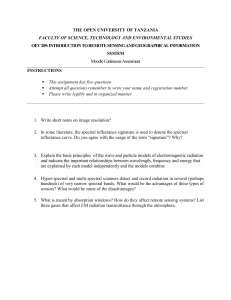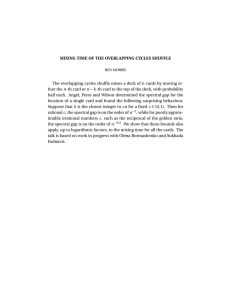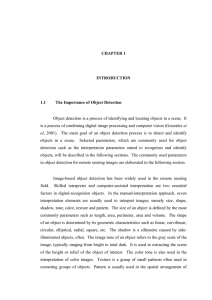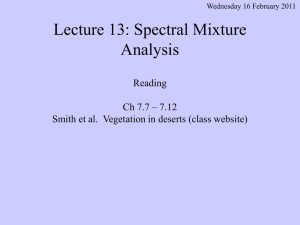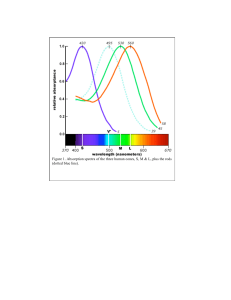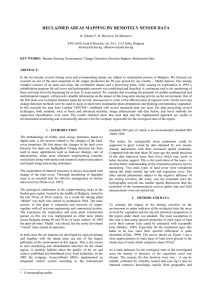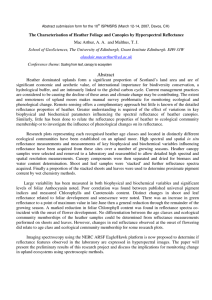A GLOBAL ANALYSIS OF URBAN REFLECTANCE
advertisement
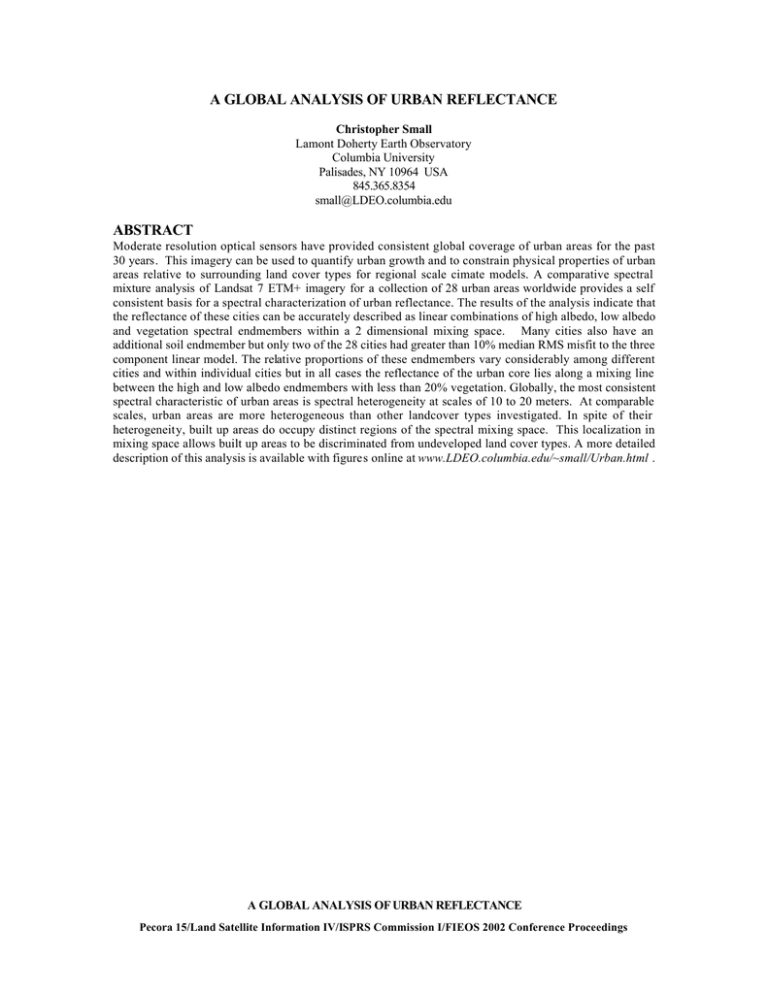
A GLOBAL ANALYSIS OF URBAN REFLECTANCE Christopher Small Lamont Doherty Earth Observatory Columbia University Palisades, NY 10964 USA 845.365.8354 small@LDEO.columbia.edu ABSTRACT Moderate resolution optical sensors have provided consistent global coverage of urban areas for the past 30 years. This imagery can be used to quantify urban growth and to constrain physical properties of urban areas relative to surrounding land cover types for regional scale cimate models. A comparative spectral mixture analysis of Landsat 7 ETM+ imagery for a collection of 28 urban areas worldwide provides a self consistent basis for a spectral characterization of urban reflectance. The results of the analysis indicate that the reflectance of these cities can be accurately described as linear combinations of high albedo, low albedo and vegetation spectral endmembers within a 2 dimensional mixing space. Many cities also have an additional soil endmember but only two of the 28 cities had greater than 10% median RMS misfit to the three component linear model. The relative proportions of these endmembers vary considerably among different cities and within individual cities but in all cases the reflectance of the urban core lies along a mixing line between the high and low albedo endmembers with less than 20% vegetation. Globally, the most consistent spectral characteristic of urban areas is spectral heterogeneity at scales of 10 to 20 meters. At comparable scales, urban areas are more heterogeneous than other landcover types investigated. In spite of their heterogeneity, built up areas do occupy distinct regions of the spectral mixing space. This localization in mixing space allows built up areas to be discriminated from undeveloped land cover types. A more detailed description of this analysis is available with figures online at www.LDEO.columbia.edu/~small/Urban.html . A GLOBAL ANALYSIS OF URBAN REFLECTANCE Pecora 15/Land Satellite Information IV/ISPRS Commission I/FIEOS 2002 Conference Proceedings
